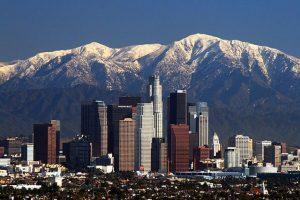
Transit ridership is down in a number of markets, but LA’s declines have attracted a lot of attention – and for good reason. LA has invested billions of dollars in rail transit but has failed to grow ridership, which is still below its 1985 levels. And ridership has actually been falling in recent years, even on the existing core rail lines. (New and expanded lines saw some growth).
I don’t see a grand narrative of transit decline at the national level. I think we need to look at local markets to see what’s going on. The Bay Area has seen pretty good performance vs. LA. New York’s ridership is up substantially in the last couple of decades, with recent declines intuitively related to operational reliability problems. It’s probably the same in other legacy cities like DC, whose Metro system has been problem plagued. Chicago’s rail declines have been tagged as resulting from cannibalization of off-peak trips by Uber and Lyft.
What about LA? A new study attributes the transit declines there to sharply higher vehicle access among the transit dependent population.
The study notes that a relatively small number of people and neighborhoods disproportionately fuel transit ridership. The median number of rides in LA is zero. The authors investigate several potential causes of transit decline – falling gas prices, Uber/Lyft, and neighborhood demographic change – but alight on rising access to vehicles as the most likely culprit.
A defining attribute of regular transit riders is their relative lack of private vehicle access. But between 2000 and 2015, households in the SCAG region, and especially lower-income households, dramatically increased their levels of vehicle ownership. Census data show that from 1990 to 2000 the region added 1.8 million people but only 456,000 household vehicles (or 0.25 vehicles per new resident). From 2000 to 2015, the SCAG region added 2.3 million people and 2.1 million household vehicles (or 0.95 vehicles per new resident).
The growth in vehicle access has been especially dramatic among subsets of the population that are among the heaviest users of transit. Between 2000 and 2015, the share of households in the region with no vehicles fell by 30 percent, and the share of households with fewer vehicles than adults fell 14 percent. Among foreign-born residents, zero-vehicle households were down 42 percent, and those with fewer vehicles than adults were down 22 percent. Finally, among foreign-born households from Mexico, the share of households without vehicles declined an astonishing 66 percent, while households with more adults than vehicles dropped 27 percent. Living in a household without a vehicle is perhaps the strongest single predictor of transit use; the decline of these households has powerful implications for transit in Southern California.
…
Public transportation is unlikely to fare well when Southern California is flooded with additional vehicles, especially when those vehicles are owned disproportionately by transit’s traditional riders. Much of the region’s built environment is designed to accommodate the presence of private vehicles and to punish their absence. Extensive street and freeway networks link free parking spaces at the origin and destination of most trips. Driving is relatively easy, while moving around by means other than driving is not. These circumstances give people strong economic and social incentives to acquire cars, and —once they have cars —to drive more and ride transit less.
The advantages of automobile access, which are particularly large for low-income people with limited mobility, suggest that transit agencies should not respond to falling ridership by trying to win back former riders who now travel by auto. A better approach may be to convince the vast majority of people who rarely or never use transit to begin riding occasionally instead of driving.
Click through to read the entire study.
Note that they don’t completely discount neighborhood change as a factor. They suggest that it needs more study.
What this study suggests to me is that LA’s ridership declines may be more entrenched than those in places like NYC and DC, which I believe could be reversed by improving reliability.
This piece originally appeared on Urbanophile.
Aaron M. Renn is a senior fellow at the Manhattan Institute, a contributing editor of City Journal, and an economic development columnist for Governing magazine. He focuses on ways to help America’s cities thrive in an ever more complex, competitive, globalized, and diverse twenty-first century. During Renn’s 15-year career in management and technology consulting, he was a partner at Accenture and held several technology strategy roles and directed multimillion-dollar global technology implementations. He has contributed to The Guardian, Forbes.com, and numerous other publications. Renn holds a B.S. from Indiana University, where he coauthored an early social-networking platform in 1991.
Photo Credit: Nserrano, CC BY-SA 3.0












